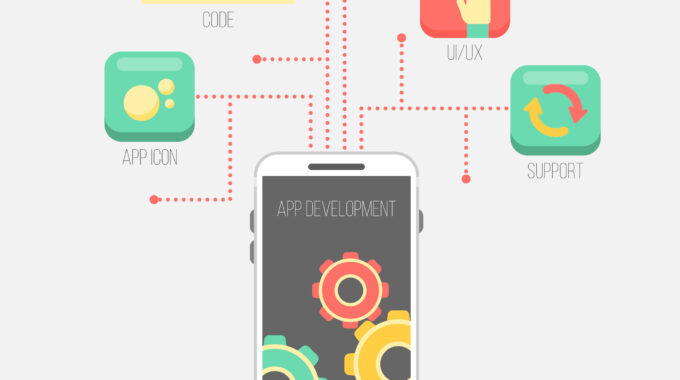This article delves into the pivotal role of Franchise Management Software in streamlining operations and…

7 Options To Modernize Legacy Systems
Introduction
Legacy systems are functioning applications that are existing within many organizations. Organizations must decide how best to upgrade or modernize their existing legacy systems to maintain updated and competitive technologies. There are many benefits to modernizing legacy systems, such as improving performance, reliability, security and cost savings. This article will explore seven options to modernize legacy systems, explaining the benefits of each option, along with the risks associated with the modernisation process.
Benefits of Modernizing Legacy Systems
Modernizing legacy systems comes with numerous benefits. It can give organizations new, improved functionality and reduce technical debt. It also increases support availability, reduces risk and increases flexibility, scalability and security capabilities. Organizations can benefit from cost savings as well, as they no longer need to deploy large teams to maintain the existing legacy systems. Furthermore, modernization can provide improved reliability of existing applications.
Option 1: Re-platform Legacy Systems
Re-platforming legacy systems involves the migration of the underlying application architecture and data, but retaining the core functionality of the existing system. It can be a costly option, as it is time consuming, but it also enables organizations to avoid costly coding and re-testing as the existing user interface and functionality is preserved. Re-platforming is a great option for organizations with larger and more complex IT environments, as it ensures minimal disruption to existing systems.
Option 2: Re-host Legacy Systems
Re-hosting involves moving the legacy system to a new hosting environment. It offers many benefits, such as improved performance, better scalability and cost savings. It is a great option for organizations that need to quickly upgrade their existing legacy applications. Re-hosting is relatively straightforward, but it can be difficult to ensure that all existing data and applications are migrated to the new hosting environment.
Option 3: Refactor Legacy Systems
Refactoring is the process of restructuring existing code without changing its functional behaviour. It can help improve system performance and reduce maintenance costs. Refactoring is especially beneficial for organizations that need to upgrade the existing user interface, such as adding new features or modernizing the overall look and feel. However, refactoring can be quite expensive and time consuming, as it requires existing code to be refactored from scratch.
Option 4: Re-architect Legacy Systems
Re-architecting is the process of redesigning an existing system to upgrade or modernize it. It allows organizations to exploit the latest technologies and trends, while also providing improved performance and scalability. Re-architecting can be expensive and time consuming, as it requires existing systems to be redesigned from the ground up. However, it also provides organizations with great flexibility, as they are able to select the best technologies for their specific needs.
Option 5: Re–implement Legacy Systems
Re-implementing legacy systems involves re-writing the existing code from scratch. It can be a great option for organizations that need to quickly upgrade their existing applications. Re-implementing is relatively straightforward, but it can be quite expensive, as it requires existing code to be re-implemented from scratch.
Option 6: Re–engineer Legacy Systems
Re-engineering is the process of changing existing systems to make them better suited for current business needs. It can help organizations improve their existing systems by taking advantage of newer technologies, as well as improving performance and scalability. Re-engineering is time consuming and expensive, but it provides organizations with greater flexibility and control.
Option 7: Hybrid Approach
For organizations that need to quickly upgrade their existing applications, a hybrid approach might be the best option. In this approach, organizations can take advantage of some of the other options mentioned above, while also preserving the existing functionalities of the legacy system. This hybrid approach enables organizations to upgrade their existing systems without having to overhaul or rewrite the codebase from scratch.
Conclusion
Organizations must decide how best to modernize their existing legacy systems, in order to maintain updated and competitive technologies. There are many benefits to modernizing existing systems, such as improved performance, reliability, security and cost savings. The seven options discussed in this article include re-platforming, re-hosting, refactoring, re-architecting, re-implementing, re-engineering and a hybrid approach. Each option comes with its own unique benefits and risks, so organizations must carefully consider which option is the best fit for their needs.
About Apoorva:
Apoorva is a technology services company that assists software products with ideation, developing prototypes, programming, creating a digital marketing presence and accelerating sales through direct contact. Over 150 for-profit and non-profit organizations, such as Xcel Energy, PeopleCare Health Services, Frontier Airlines and Centers for Spiritual Living have trusted Apoorva to build software.
Apoorva was founded in 2001, has more than 50 employees, and uses proprietary and proven methodologies to bring technology products to the market. Contact us / Visit apoorva.com for more information.
[/vc_column_text][/vc_column][/vc_row]




